


Illuminating The Profound Meanings
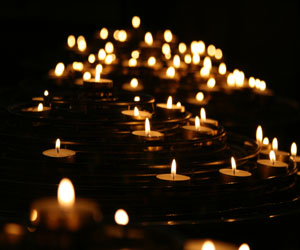
Candles have been a symbol of light and illumination for centuries, spanning various cultures and religious traditions. The flickering flame, the warm glow, and the steady burning wick have all been associated with profound symbolism that transcends their utilitarian function. In this article, we delve into the rich tapestry of candle symbolism, exploring the various meanings and significance attributed to these timeless sources of light.
Light And Hope: Candles are often seen as symbols of light piercing through darkness, representing hope and the triumph of good over evil. Lighting a candle can be an act of optimism, a way to banish the shadows, and a beacon of hope during challenging times.
Spirituality And Religion: Candles hold significant importance in many religious and spiritual practices. In Christianity, the lighting of candles in churches signifies Christ as the "light of the world." In Buddhism, candles are lit to symbolize the enlightenment of Buddha, while in Hinduism, they are used during various ceremonies to represent the divine presence.
Memorial And Remembrance: Candles are a powerful symbol of remembrance and reverence. Lighting a candle in memory of a loved one who has passed away is a common practice. It symbolizes that the memory of that person continues to shine in our hearts.
Celebration And Joy: Candles are used during celebrations to symbolize joy and festivity. Birthday candles, for example, signify the joy of another year of life. In many cultures, candles are an essential part of wedding ceremonies, representing the joy and union of the couple.
Protection And Warding Off Evil: In some cultures, candles are believed to have protective qualities. Lighting a candle is thought to ward off negative energy, evil spirits, or bad luck. This belief is often tied to the symbolism of the candle's light dispelling darkness and negativity.
Guidance And Enlightenment: The act of lighting a candle can also symbolize the search for guidance, wisdom, or enlightenment. It is a way of asking for clarity in decision-making, a desire to gain insight, or a call for divine intervention in one's life journey.
Peace And Serenity: Candles have a soothing quality, and their warm glow is associated with peace and serenity. Many people use candles as part of their meditation or relaxation routines, creating a calming atmosphere and symbolizing inner peace.
Connection And Unity: Lighting candles in a group or community setting can symbolize unity and connection. The shared act of lighting candles during vigils, ceremonies, or protests reinforces the sense of togetherness and solidarity.
Endurance And Perseverance: The steady, unwavering flame of a candle can symbolize endurance and perseverance. Candles teach us that even in the face of adversity, one can continue to shine and stand tall.
Time And Passing Moments: The act of lighting a candle can also symbolize the passage of time. Each moment the candle burns represents a moment in life's journey, emphasizing the transient nature of existence.
Candle symbolism is a diverse and fascinating realm, reflecting the numerous ways in which candles have been woven into the fabric of human culture and tradition. Beyond their practical use for illumination, candles embody deep meanings of hope, spirituality, remembrance, joy, and more. The next time you light a candle, take a moment to consider the profound symbolism it holds and the light it brings to your life.
A Time-Honored Craft With Modern Relevance
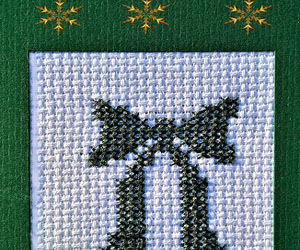 Connection To Tradition: Needlework connects us to our cultural heritage. Many techniques and patterns have been passed down through generations, preserving age-old traditions. This connection to tradition adds a layer of historical richness to the craft.
Connection To Tradition: Needlework connects us to our cultural heritage. Many techniques and patterns have been passed down through generations, preserving age-old traditions. This connection to tradition adds a layer of historical richness to the craft.
A Sustainable Hobby: Needlework is often sustainable and eco-friendly. Crafters can create practical, long-lasting items that reduce the need for disposable, mass-produced alternatives. This aspect of needlework aligns with a modern focus on sustainability and eco-conscious living.
Versatility: Needlework can take on various forms and serve diverse purposes. From functional items like clothing, home decor, and accessories to fine art and wall hangings, the versatility of needlework allows for a wide array of projects.
To explore the world of needlework and incorporate it into your life, consider the following steps:
Choose Your Craft: Start by selecting a specific form of needlework that resonates with you. Whether it's embroidery, cross-stitch, knitting, or crochet, choose a technique that aligns with your interests and goals.


A Global Celebration Of Brews
 Beer And Celebration: Beer has long been an integral part of celebrations and rituals across the world. In Germany, Oktoberfest is a cultural phenomenon that draws millions of visitors from around the globe. In Ireland, St. Patrick's Day is synonymous with toasts of Guinness and other Irish stouts. In the Czech Republic, beer is often enjoyed during traditional festivals and holidays. Such celebrations highlight the cultural significance of beer and its role in fostering community and camaraderie.
Beer And Celebration: Beer has long been an integral part of celebrations and rituals across the world. In Germany, Oktoberfest is a cultural phenomenon that draws millions of visitors from around the globe. In Ireland, St. Patrick's Day is synonymous with toasts of Guinness and other Irish stouts. In the Czech Republic, beer is often enjoyed during traditional festivals and holidays. Such celebrations highlight the cultural significance of beer and its role in fostering community and camaraderie.
Beer And Food Pairing: Beer culture diversity extends beyond the beverage itself to the world of gastronomy. Beer and food pairing is a practice celebrated in many cultures. The hearty brews of Germany are perfect companions to sausages and pretzels, while the delicate flavors of sushi and sashimi in Japan are enhanced by crisp lagers. In the United States, craft beer enthusiasts have elevated beer and food pairings to an art form, experimenting with intricate combinations that rival wine pairings in complexity and creativity.
Crafting Beauty From The Ordinary
 Melding Form And Function: Woodworking blends form and function seamlessly. It's not just about creating a beautiful object; it's about making something that is also practical and useful. Furniture, for instance, should be comfortable and functional, while also serving as a stunning piece of decor. Woodworkers carefully consider the design, shape, and functionality of their creations, ensuring they harmonize with the artistic vision.
Melding Form And Function: Woodworking blends form and function seamlessly. It's not just about creating a beautiful object; it's about making something that is also practical and useful. Furniture, for instance, should be comfortable and functional, while also serving as a stunning piece of decor. Woodworkers carefully consider the design, shape, and functionality of their creations, ensuring they harmonize with the artistic vision.
Attention To Detail: One of the hallmarks of transforming lumber into art is the unwavering attention to detail. Woodworkers invest time and precision in every aspect of the project. From selecting the right joinery techniques to meticulously sanding and finishing, no detail is too small to be overlooked. This dedication results in a level of craftsmanship that elevates a simple piece of lumber into a masterpiece.
Creativity Unleashed: Woodworking is not confined by traditional boundaries. It encourages innovation and creativity. A piece of lumber can become a unique sculpture, an intricately designed carving, or a functional object of beauty.
A Timeless Tapestry Of Tradition And Artistry
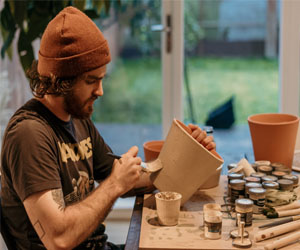 Cultural Significance: Pottery has held a profound cultural significance in the history of human civilization. In many ancient cultures, pottery was not just a craft; it was an art form deeply intertwined with rituals, spirituality, and daily life. From sacred vessels used in religious ceremonies to utilitarian items for food storage and preparation, pottery has played multifaceted roles in cultural practices.
Cultural Significance: Pottery has held a profound cultural significance in the history of human civilization. In many ancient cultures, pottery was not just a craft; it was an art form deeply intertwined with rituals, spirituality, and daily life. From sacred vessels used in religious ceremonies to utilitarian items for food storage and preparation, pottery has played multifaceted roles in cultural practices.
Global Diversity: What makes pottery culture so fascinating is its global diversity. Each culture has developed its own unique styles, techniques, and traditions in pottery. From the intricate porcelain of China and the terracotta of the ancient Greeks to the vibrant Talavera ceramics of Mexico and the earthy, rustic pottery of Native American tribes, the world of pottery is a testament to the ingenuity and creativity of humanity.
Cultural Identity: Pottery often reflects the identity and values of a culture. For example, Native American pottery features distinct geometric designs and motifs that are deeply rooted in their cultural heritage.


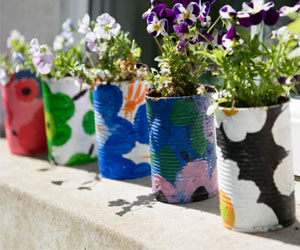

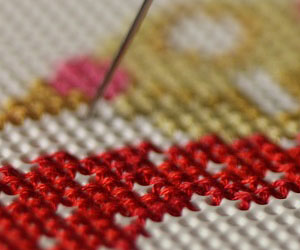

The Fascinating World Of Ancient Brewing
 Brewing As A Cultural Ritual: In ancient societies, brewing held a special place in both religious and social contexts. Beer was often associated with various deities and played a vital role in religious rituals. In Egypt, for instance, beer was a part of offerings to the gods, while in Sumeria, it was seen as a gift from the goddess Ninkasi, who was not only the goddess of beer but also a symbol of the Sumerian way of life.
Brewing As A Cultural Ritual: In ancient societies, brewing held a special place in both religious and social contexts. Beer was often associated with various deities and played a vital role in religious rituals. In Egypt, for instance, beer was a part of offerings to the gods, while in Sumeria, it was seen as a gift from the goddess Ninkasi, who was not only the goddess of beer but also a symbol of the Sumerian way of life.
The Influence Of Ancient Brewing: The techniques developed by ancient civilizations have had a profound influence on brewing throughout history. The knowledge of fermenting grains, along with the discovery of hops in medieval Europe, led to the development of beer as we know it today. Ancient brewing traditions continue to inspire modern craft brewers who look to revive old recipes and ingredients to create unique and historically accurate brews.
Brewing In the Modern Age: Despite the vast differences between ancient brewing techniques and modern practices, there are some striking similarities. Both ancient and contemporary brewers share a fundamental understanding of the transformative power of yeast. Yeast, the microorganism responsible for fermentation, was a key component in ancient brewing and continues to be the cornerstone of brewing today.
Moreover, the reverence for beer as a social and cultural drink has endured through the ages. Just as in ancient times, beer today continues to bring people together, whether it's enjoying a pint at a local pub or brewing with friends in the comfort of one's home.
Nurturing Mind And Body
 Crafting also enhances cognitive abilities. It stimulates your brain and challenges it in new and exciting ways. Whether you're following a knitting pattern or solving a design problem in woodworking, crafting requires problem-solving skills, spatial awareness, and attention to detail. Over time, these mental exercises can help sharpen your mind and keep it agile.
Crafting also enhances cognitive abilities. It stimulates your brain and challenges it in new and exciting ways. Whether you're following a knitting pattern or solving a design problem in woodworking, crafting requires problem-solving skills, spatial awareness, and attention to detail. Over time, these mental exercises can help sharpen your mind and keep it agile.
Furthermore, crafting encourages mindfulness. When you're deeply immersed in a creative project, you enter a state of flow, where you lose track of time and are completely absorbed in the task. This meditative quality of crafting can be profoundly calming and is akin to the practice of mindfulness meditation, which has been proven to reduce anxiety and improve mental health.
The sense of accomplishment that comes with completing a craft project can boost self-esteem and self-worth. Seeing your creations come to life can be incredibly rewarding, instilling a sense of pride and purpose. Crafting can also provide a platform for social interaction, as it is often enjoyed in groups or shared with friends and family. This sense of connection can combat loneliness and foster a sense of community, which is vital for overall well-being.
Crafting offers a physical dimension to wellness as well. Many crafts require fine motor skills, hand-eye coordination, and dexterity. For example, activities like knitting, pottery, or jewelry making engage your hands and fingers, helping to maintain their flexibility and strength. In some cases, crafting can even provide low-impact exercise, such as when you're woodworking or engaging in physically demanding hobbies like blacksmithing or glassblowing.